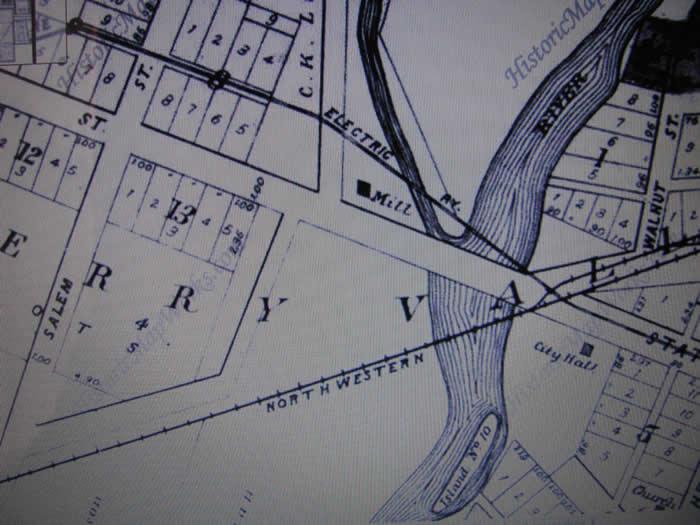
Cherry Valley Grist Mill-Site
Winnebago Co. | Illinois | USA
Watersource: Kishwaukee River.
Cherry Valley Grist Mill-Site
The mill site faces Mill Road on the northeast corner of Mill Road and State Street at the west end of the bridge. The Chicago & Northwestern RR still runs W SW across State St. at the east end of the bridge over the Kishwaukee River.

The 1905 Atlas published by Geo. A. Ogle & Co. shows the Rockford and Belevidere Electric Railway running on the north side of the mill, the mill facing Mill Road on the northeast corner of Mill Road and State Street at the west end of the bridge. The Chicago & Northwestern RR still runs W SW across State St. at the east end of the bridge over the Kishwaukee River.
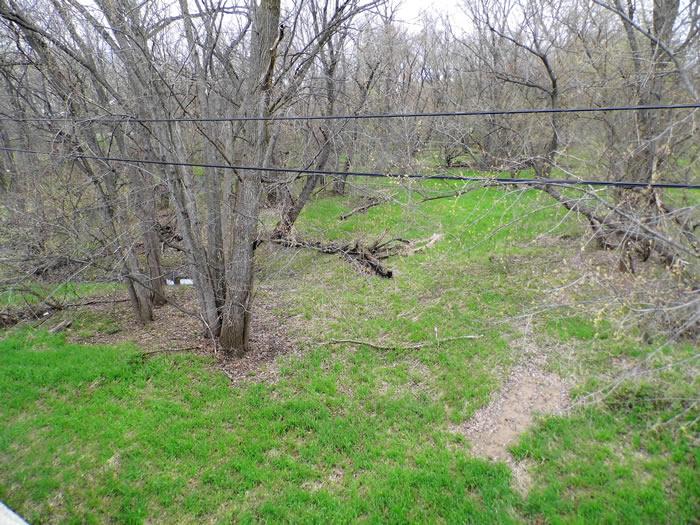
The area west and north of the bridge over the Kishwaukee River. The mill site was to the left about 50 yards. With the coming of the railroad, Cherry Valley became a shipping center for the area. At one time it had three grain warehouses (elevator), stockyards, two hotels, and a busy business district. In about 1850, a new grist mill was built on the west bank of the river at the foot of a mile long millrace. This ran along the foot of the hill below the cemetery. The dam was located where the toll road crosses the Kishwaukee River. The first Cherry Valley mill was built on the Kishwaukee at Beaver Creek about 2-2.5 miles upstream at a small, no longer viable, community of Newburg. The railroad coming through at the State Road mill caused the newburg enterprises to dry up, and the mill and most other buildings, including a hotel, were torn down in 1880.
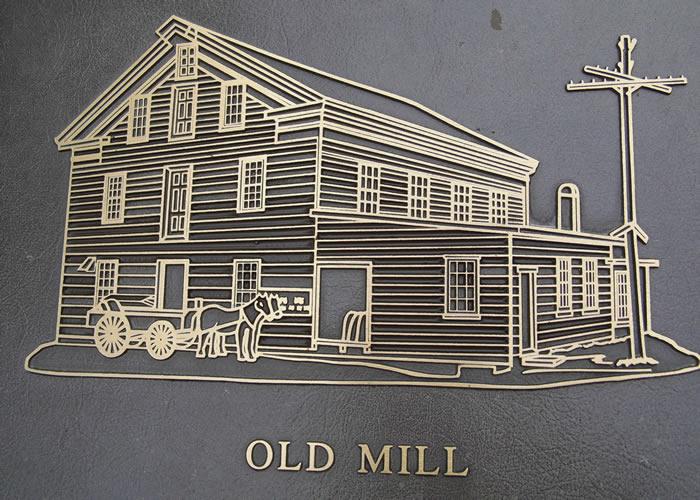
With the coming of the railroad, Cherry Valley became a shipping center for the area. At one time it had three grain warehouses (elevator), stockyards, two hotels, and a busy business district. In about 1850, a new grist mill was built on the west bank of the river at the foot of a mile long millrace. This ran along the foot of the hill below the cemetery. The dam was located where the toll road crosses the Kishwaukee River. GPS: 42°14.185'N 88°57.33'W ele 741'/226 meters
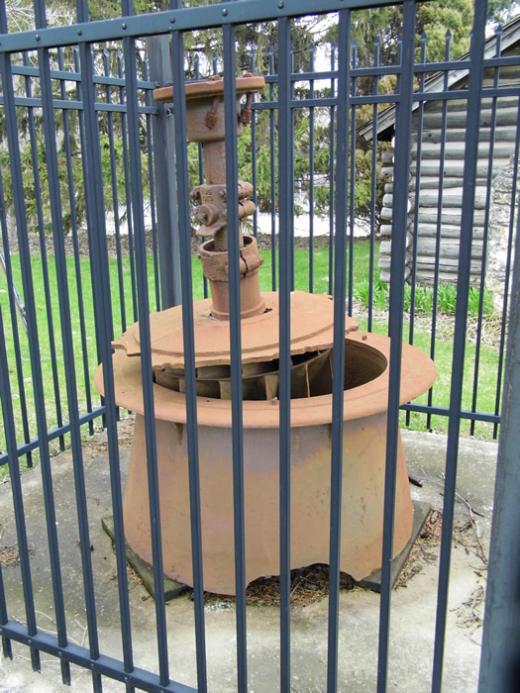
The mill produced flour and also ground feed for area farmers. About 1900, an electric generator was installed at the mill to produce power for the electric lights for the village. This was run by water power. About 1905, an engine was installed in the mill to run the mill and generator when the river was low or in flood. The quarry on the west side of the mill road was flooded at one time and a barge was loaded with stone to be poled up the race to the dam when repairs had to be made. About the time of WWI, a tornado wrecked the third floor of the mill and a flat roof was installed on the second floor. Also at this time the stone buhrs were removed and modern feed grinding machinery was installed to grind animal feed. The mill ran on water power as late as 1935. In 1951 the machinery was removed and most of the building was torn down by then owner, Bill Lembke.
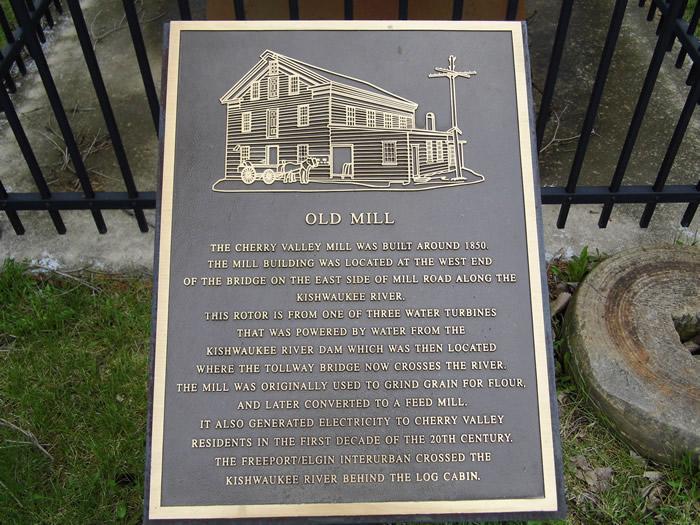
Most of the hand-hewn oak beams, held together with oak pins, were as good as when the mill was built. Mr. Lembke took over the mill in 1920 and operated it for 20 years, stopping to take over the operation of the Winnebago County Farm Home & Hospital. Some of his customers came from as far away as Monroe Center, Fairdale & Argyle. The three runs of French millstones were removed in 1914 and used to repair the dam about three-quarters of a mile north of the mill. Roller mills were installed, still powered by water until 1935, being replaced by diesel. The following describes the operation of an owner/operator before Mr. Lembke: The Cherry Valley Mills of John Fischer (for which the Kishwaukee furnishes the power) do a large custom work, besides manufacturing largely for merchant interest. Two large elevators, of large capacity and ample facilities, handle and ship large quantities of grain.